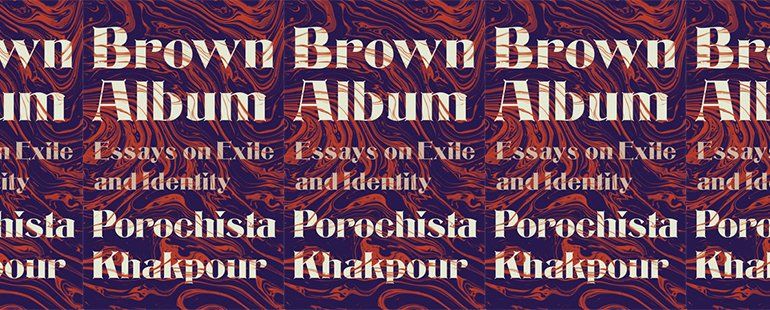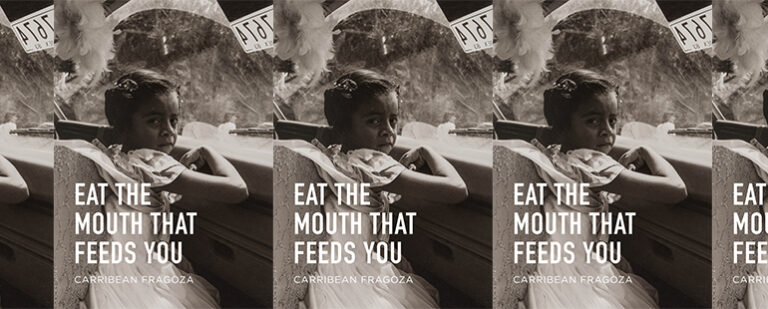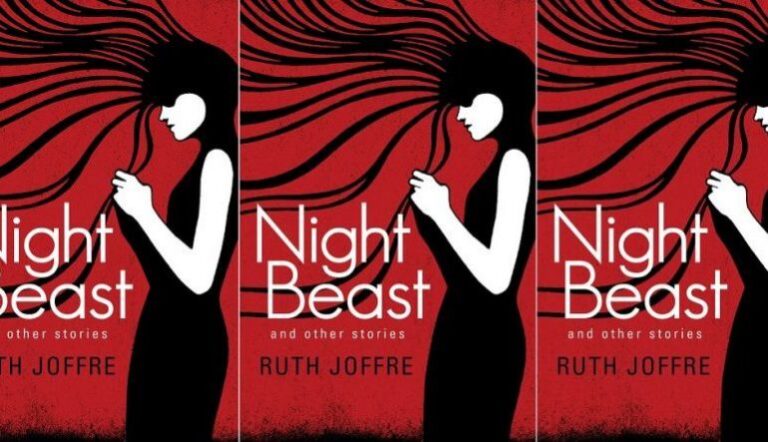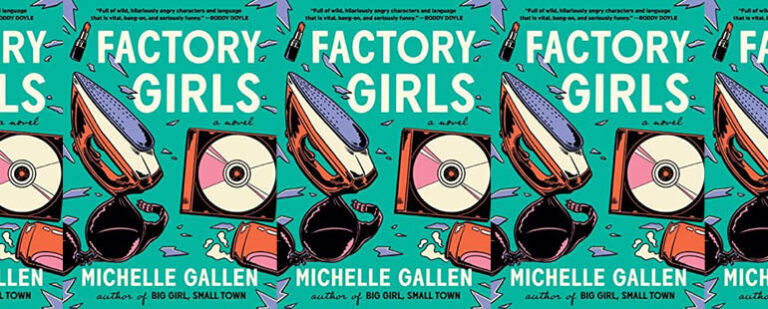Brown Album: Essays on Exile and Identity by Porochista Khakpour

Brown Album: Essays on Exile and Identity
Porochista Khakpour
Vintage | May 19, 2020
In Brown Album: Essays on Exile and Identity, Porochista Khakpour, who left Iran at two and hasn’t returned since, unequivocally claims the country of her birth as the cornerstone of her identity. The Iranian revolution, which she experienced when she was a year old, is “the one historic event that has made me more me than anything,” she writes early on in this taut collection.
Around the centrifuge of her Iranian heritage swirl other identities: writer, New Yorker, refugee, brown woman, smoker, Muslim-by-culture, vegetarian, disabled person, weirdo. Some labels she tries on and discards, others form part of the kernel of who she is. As a student, she identified as lesbian or bisexual—“I constantly went back and forth between these, mainly because of my already established love of all things alternative”—only to discover later that she is the latter. Life as a committed vegetarian also ends when she learns her diet is the cause of her poor health. But one piece of herself she can’t discard is the tension inherent in the hyphen that lives at the center of her Iranian-American identity. The events of 9/11 solidified her identity as a New Yorker but also heightened the country’s distrust of her ethnicity. In the opening essay, “A New Persian Empire,” she writes of Iranian-Americans who call themselves “Persian,” which Khakpour rejects as a convenient sugarcoating. Khakpour prefers “Iranian” despite it being controversial, just as she sticks to her original name despite it being butchered over the years in one public forum after another.
Yet whatever identities she tried on and discarded, she retains the identity of “other” throughout. She is a woman who wants to be recognized as someone whom conventional society cannot tame, who can reinvent herself as easy as changing clothes. “The less I understand myself, the more at peace I am with all my disconnected pieces,” she writes.
The essays are divided into two parts: the first deals mostly with Khakpour’s childhood, the second with her life as a published author. Threaded through both sections are Khakpour’s parents, who form a counterbalance to the trajectory of her life and developing attitudes. At the beginning of Part One, Khakpour dedicates an essay, “Revolution Days,” to her parents’ life in Iran and its aftermath in America. In Iran, they have multiple degrees and enjoy a “well-travelled worldliness” and a secular, nouveau riche life. When considering why their life in America hasn’t been equally cushy, Khakpour points to her parents’ stubborn insistence to remain Iranian. “They had deep accents, slim savings, and a resistance to assimilation,” she writes.
Interspersing her parents’ story with her own recollections of their early years in America, “Revolution Days” exposes an early rift between Khakpour and her parents: as a child, she wants to assimilate into America and look to the future, while her parents are fixated on the past and believe they will return to Iran. In another essay that describes her father wanting her to ride a camel at a zoo when she is eight, she calls her father’s accent “horribly Middle Eastern.” As a child, she disliked his darkness and his loudness and his ethnicity, and when people told her she was a lot like him, she felt deeply embarrassed.
In an interesting twist, it becomes evident as the essay collection progresses that Khakpour and her parents switch positions regarding their stand on America: as she becomes disenchanted, her parents begin to feel they belong. They grow increasingly comfortable in their simple house in Pasadena, and her father feels at home in the college where he teaches. Meanwhile, Khakpour witnesses Islamophobia and racism, and realizes “every day is a lesson in America, the real America, the violent one.”
When Khakpour goes to Sarah Lawrence College to study creative writing on scholarship, her parents—a scientist and an accountant—don’t understand what she’s doing. Khakpour has worked toward being a writer since she was seven when she “scrawled novel after novel in careful cursive,” practicing for when she’d be a writer in a “faraway land called New York City where I knew writers lived.” But her parents are puzzled by the lack of structure, the lack of exams, and her inability to tell them what she’s actually learning.
The tension within the family comes to the fore about a decade later over two seemingly superficial issues: gradations of skin tone, and color of hair. Khakpour’s feelings of distance from her mother have existed since childhood, but they crystallize around the issue of dyeing hair. Both Khakpour and her mother have naturally jet-black hair, but like many wealthy Tehrangeles, on whom Khakpour lavishes disdain for their “hulking hairdos, blinding bling, chichi couture, froufrou wheels, rococoocoo estates,” her mother has dyed her own hair a reddish blond since arriving in America. In Khakpour’s view, her mother does so because she wants to pass as white and is thus disguising who she really is.
But despite her disdain for those Iranian-Americans who peroxide away their natural identity, Khakpour also admits to a life-long fascination with blondes. She even becomes a blonde herself, under the auspices that she is doing it in the name of research for a novel she is writing about the Iranian-American women in Los Angeles, “who kept to blond bombshelling almost as a rule.” But Khakpour’s experiment does not turn her into a blond bombshell. Her hair turns almost white—a punk, “weird-bird blond.” According to her neighbor, she looks like she’s had a breakdown or joined a Witness Protection Program.
It is not surprising that of all her identities, that of writer earns the most pages in this collection. And yet when she realizes the dream of New York Young Writer, it drowns rather than uplifts her. The stress of being reviewed and launching her first novel makes her sick, and on top of that she runs out of money. In “How to Write Iranian America,” she charts her course as a writer in terms of a witty instruction manual, in which she chafes at being labeled an “Iranian-American writer” and yet seems unable to write about anything other than her experience and that of others who share her heritage. The essay explores a visceral tension between the adage, “write what you know” and the desire not to be pigeon-holed. In the end, Khakpour acknowledges that she has, in fact, put herself in that box: both her novels are about being Iranian-American, as are these essays. She can’t, she realizes, separate her writing from her racial identity.
For Khakpour, as we see in “Brown Album,” her final cry of an essay whose title comes from an album of old photographs that her parents kept, race is at the center of who she is. It is her obsession. “This is the essay that many of my own people would tell me to go kill myself for because I deny the whiteness they claim,” she writes. Even her parents, who now identify as Caucasian, wish she’d drop the subject. But she is unable to forget that her father told her as a child that they were “gandom-gan,” which means wheat-colored or brown in Farsi. That memory fuels her sense of self and links to instances in her childhood when she was considered too dark, too foreign-looking. Now, in the era of Trump, she witnesses acts of white supremacy and feels she is the butt of racist comments by acquaintances with whom she is staying while trying to recover from an unknown toxicity at the end of 2017.
The toxicity in America under Trump seems to infiltrate her spirit. She feels afraid and battered. “Let the record state that, during Trump’s America, I became broken,” she writes.
“I, a brown woman, forever brown, broke.”
But Khakpour is not one to capitulate. This book itself is evidence of the strength of her spirit. In the introduction she states that these essays “are a testament to the greatest and worst experiences of my life,” and that “[m]uch of this book was written in tears.” The result is a collection that is by turns raw and wry, witty, and heartbreaking. Above all, it is a fearless reflection of an immigrant searching for home and for herself.
Correction (May 19, 2020): An earlier version of this piece stated that Khakpour is neither lesbian nor bisexual; this is incorrect.


